The Railway
One of the shorter short-lines in the country, this little stretch of track still serves a very crucial purpose. In that sense it’s no less important than the big transcontinental players. A busy firm, the line’s only customer, uses it to send much of their output to market. Once every couple or few days, a string of loaded rail cars is transported down to the US border for forwarding to any number of customers there. This is the Nelson & Fort Sheppard Railway, connected to Atco Wood Products of Fruitvale BC, and we’re along for a ride.
This line dates back to the 1890s. It once ran from the US border just south of Trail British Columbia, at a place called Waneta, north to Nelson. In direct competition with the Canadian Pacific Railway’s Columbia and Kootenay Railway, a firm with a virtual monopoly on rail traffic in the West Kootenays, it allowed products produced in the area, lumber, mineral products and others, a less circuitous route to customers in the US.
Researched, written and photographed by Chris Doering and Connie Biggart. (BIGDoer/Synd/Canada.com)
When built the line carried the name Nelson & Fort Sheppard (or simply N&FS) same as it does today. For much of the time however, under a series of owners, it didn’t. The line is much shorter today than it used to be, which we’ll touch on in a moment.
Just before the twentieth century the N&FS and it’s US based sister railway (Spokane Falls and Northern Railway), which it connected with at the border, came under control of the Great Northern Railway. A major northern US carrier this company had aspirations to exploit business across the line and had a number of branches that sneaked into southern BC. In the 1970s, the Great Northern amalgamated with a number of other lines becoming the Burlington Northern Railway. All the while freight moved on the line, but in lesser and lesser volumes with each passing year. In the 1990s, the most northerly section, from Nelson to Salmo was removed from service. Today, it’s a rail-trail. We could see if from our hotel window in Ymir.
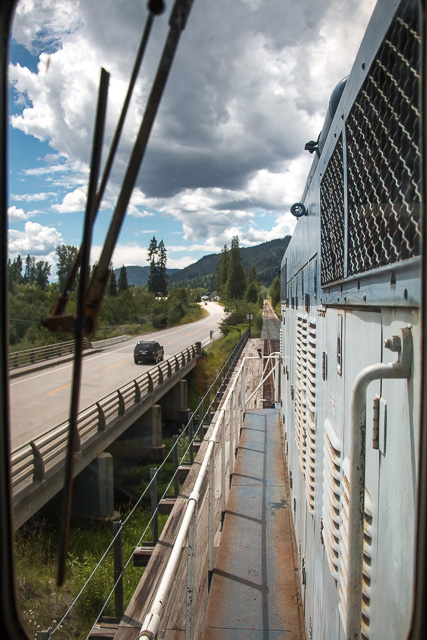
A day with the Nelson & Fort Sheppard Railway.
In the latter half of 1990s Burlington Northern, via a merger, morphed in the Burlington Northern Santa Fe. With that the line was cut back further, to a point just east of Fruitvale. Soon after they sold the most northerly section of track outright – Atco was the only customer along it by this point and their output was not enough to keep a big company interested.
A new firm, International Road Rail Systems took over. Their line ran from the Atco Mill in Fruitvale to Columbia Gardens a bit to the south. Most of the stub east was pulled up. The rest of the former Nelson & Fort Sheppard line still active, remained under the ownership of BNSF for a time – there was good business connected with the huge smelter in nearby Trail. Since the mid-2000s, that part of N&FS has belonged to the Kettle Falls International Railway who also acquired from BNSF the old SF&N Line on the US side. Hard to keep track of the players!
A couple years back, the Atco firm took over the IRRS line directly, giving it back its original name in the process. The track is kept busy taking boxcar loads of veneers, thin wood sheets that Atco produces, that are then sent to firms. mostly in the US, to be made into plywood. Every two or three days loads are shipped down to the interchange point and exchanged with empties. Lather, rinse and repeat. The siding at the plant holds perhaps eight to nine cars maximum. There’s an overflow siding just to the west for temporary storage.
A small stretch of track east of the plant remains in place to store the firm’s rail car, an old passenger coach used for special community events.
Interestingly, the current Nelson & Fort Sheppard serves neither of the places mentioned in its title. The line dreams big! Fort Sheppard never really amounted to anything and was located near present day Waneta (so along the current KFI). Its name was inspired by, it’s believed, a place called Fort Shepherd, long ago a former Hudson’s Bay Trading Post, just across the mighty Columbia River and was either purposely or due to some mistake, spelled differently.
The line runs downgrade from the plant in Fruitvale, helpful since loads are outbound. There is the siding at the plant (and a locomotive spur), another in Fruitvale and one at the interchange in Columbia Gardens. That’s it. There’s a number of trestles along the line, some of them quite high, including one that crosses right above scenic Beaver Creek Falls. Long way down! An old sign panted on a smooth rock face beside the track entices train passengers to stop at the Sayward Hotel (we believe in Salmo, early 1900s). Meals are 35c, beds 25c or 50c. Or something like that, the sign is badly faded.
The line is some eight clicks long, eight point one on a hot day. In it’s short journey it travels through some remarkably scenic country.
Things move as leisurely pace, no high speed rail here, a round trip taking few hours. Shadowing the train on the return trip was a maintenance of way hi-rail truck. These guys keep an eye on the line and look for track and infrastructure problems.
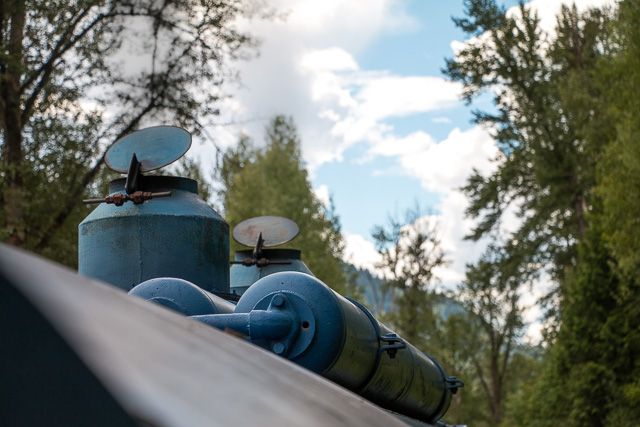
This old locomotive has been hard at work for sixty years.
Loads are always made up of boxcars since veneers require protection from the elements. Most shipments end up at plywood manufacturers on the west coasts of Washington and Oregon. From the border they travel by Kettle Falls International Railway and later Burlington Northern Santa Fe to their final destination. Some veneer loads leave the Atco Mill by truck (boo!), as do many miscellaneous byproducts produced in the plant (they use every last bit of every last log), but that’s another story. Still, the little railway does the heavy lifting and is super important to the ongoing success of the Atco mill. It’s a short but vital link.
Our crew was made up of old hands Tom and Jerry. Unlike the cartoon cat and mouse duo, they get along just fine. Each has been doing it for eons and both were formerly employed for the CPR. They make it looks easy, almost too easy. Watching them was pure magic. They did it smoothly, confidently, the mark of a true expert. As we rode on through the countryside, each spoke of their days with the railway, the history of the line and even pointed out landmarks and features. Great guys (and who said railway types are gruff…well okay most look gruff), we’ve never felt so welcome. Also on board was trainee Jacob. Five guys in the cab. Cozy!
At the interchange point they traded loads with empties. The siding here is has a modest capacity, more than the entire number of cars being swapped, so it took a bit of juggling to make it all work. In fact there we more empties than could fit at the mill siding and Fruitvale overflow track, so some were left behind for later. The KFI would come sometime in the next day or so take the loads south. We tried to coordinate with them to follow the cars the final couple clicks to the US border but they couldn’t confirm us an exact time. Too bad, but it happens.
Empties in tow, it’s uphill now, perhaps a percent or two in spots, maximum, the engine working hard at times even in spite of the modest load. Still, it’s a quick run back to the mill, with a stop in town to drop a few excess cars. The trip over, the engine is returned to its storage spur, shut down and everyone makes their way home.
Train spotters can easily view the action, if they’re lucky enough to time it well, from public roads in Fruitvale or Columbia Gardens. The rest of the line passes through areas well away from any access.
Our ride, #4519, is an oldie dating back to 1957. Built by the firm Electro Motive Division of General Motors, in Illinois, it is a model GP9. That firm was at the time the largest locomotive company in the world, and this model, one of it’s most popular offerings. Over three thousand four hundred were built in the US between 1954 to 1959 and another six hundred and change by the firm’s Canadian factory, General Motors Diesel Division, London Ontario, between 1954 and 1963. Visually and mechanically there’s little difference between US and Canadian built models.
The locomotive was originally owned by the Grand Trunk Western, one of Canadian National Railways’ US subsidiaries, which operated in a number of upper-central states below the Great Lakes. In the past it carried the number #4919 (some reports also say #919) and later the one it still uses today, #4519. The firm got good mileage out of the engine, not disposing of it until 1998. This author while researching this piece found photos of it at work over the years going back to the 1950s. Very cool. It was often seen pulling passenger runs back then.
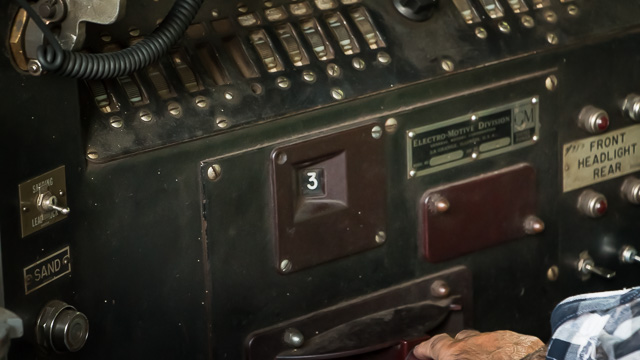
An expert hand on the controls.
Made available on the used market (smaller older locomotives can be in great demand by short-line railways), it soon came north to Canada. Some work was done – the short-end nose lowered for better visibility, for one – before it found work with International Road Rail Systems, recall that earlier incarnation of the current Nelson & Fort Sheppard line. It’s still in the colours of that owner but is due to be repainted soon. It replaced an earlier locomotive leased briefly by the IRRS prior to its arrival.
In spite of it age, the GP9 is very supportable and makes a great small railway locomotive. There’s still a good number of them out there at work and parts are easy source,and repairs fairly simple. They have good pulling characteristics, and being modest in size means they’re easy on infrastructure and efficient to run. Win-win for a short line. The model was so revered that many major railways, in fact, held on to them well into this century. Kudos to GM for making one fine locomotive. Today the firm (no longer under GM control) seems a shadow of its former self.
This is the third and final instalment in the Atco Wood Products series. Earlier we looked at how they do it up in The Woods, harvesting trees while still caring for nature, and what happens at The Mill, where every last bit of each and every tree is turned into useful products. The whole experience was incredible, even eyeopening, and hopefully was insightful to our readers as well – what a lumber firm that cares? A great big giant thank you goes out to our hosts. It was one heck of an adventure.
More railways we’ve visited…
Crazy Times in Coach, on Via’s Canadian.
Train Day at Aspen Crossing.
Class of ’63.
A day with the Battle River Railway.
If you wish more information on what you’ve seen here, by all means contact us!
Date: July, 2016.
Location: Fruitvale, BC.
Article references: The Nelson & Fort Sheppard Crew, Jerry, Tom and Jacob, the “man” Scott Weatherford, Atco Wood Products, Canadian Trackside Guides.
BIGDoer.com was on location with permission.
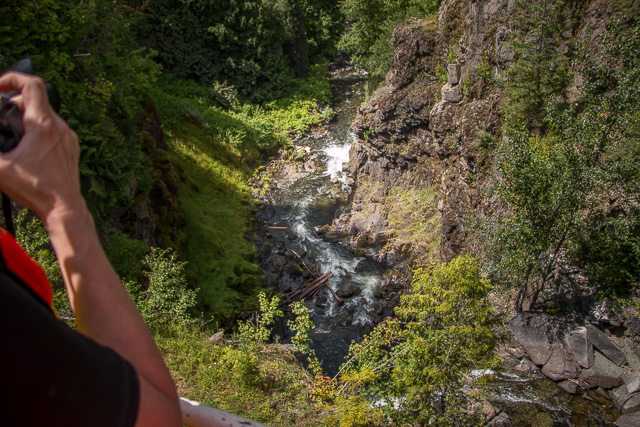
The falls on Beaver Creek from above.
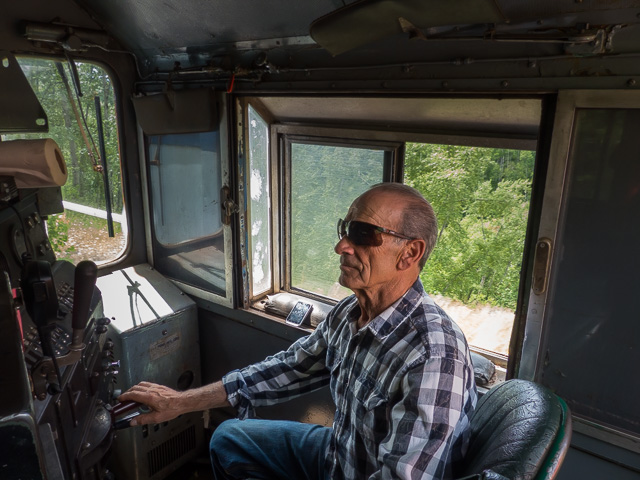
Our capable engineer and long time railroader, Tom.
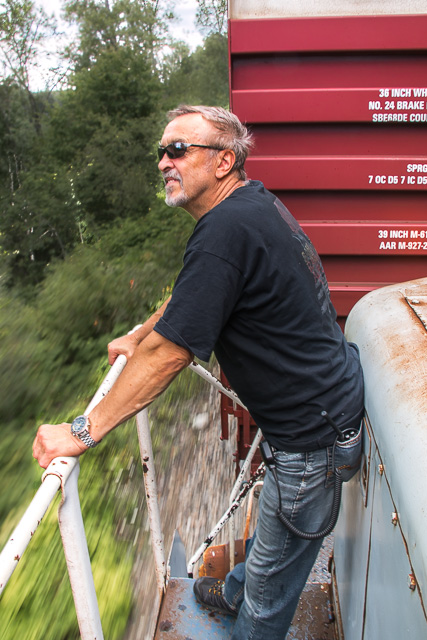
His best “Blue Steel”, crew member Jerry speaks of his time on the railway.
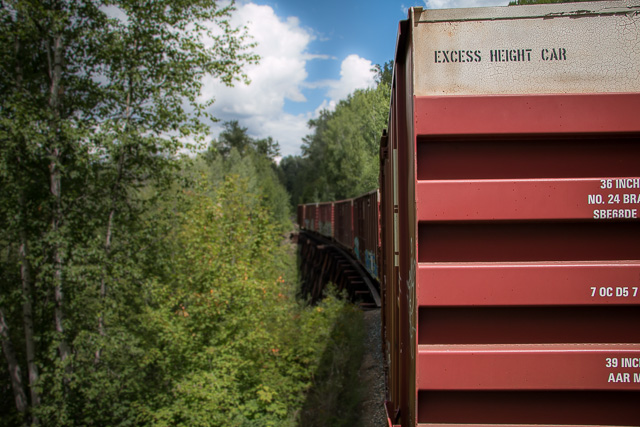
Boxcar after boxcar of Atco Veneers heading to market.
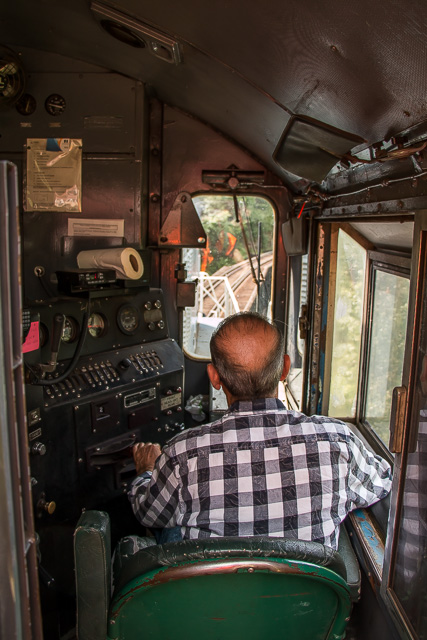
Pure magic to see such an expert at work.
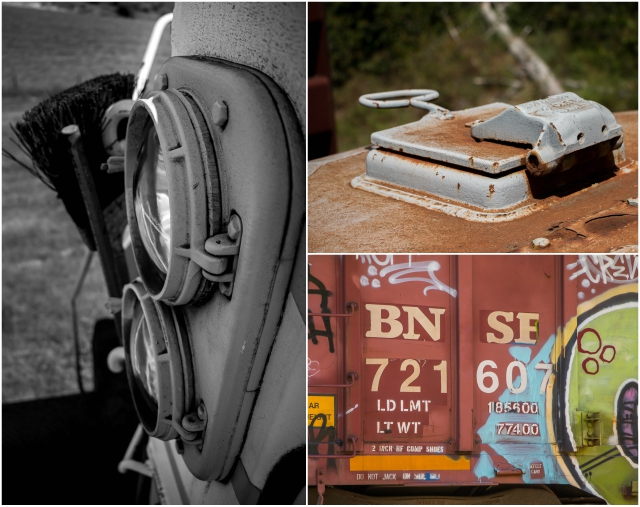
The little details…
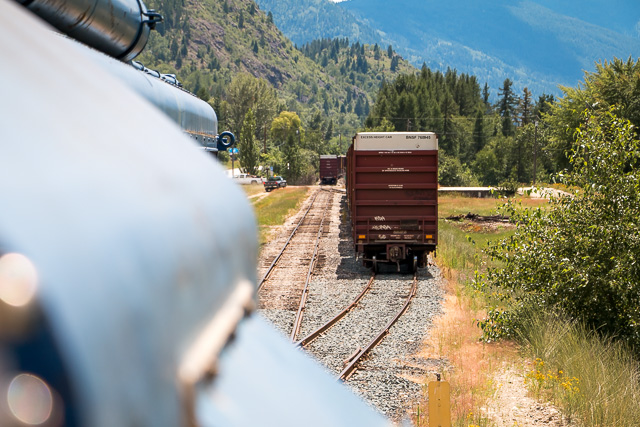
Arriving at Columbia Gardens, the interchange point.
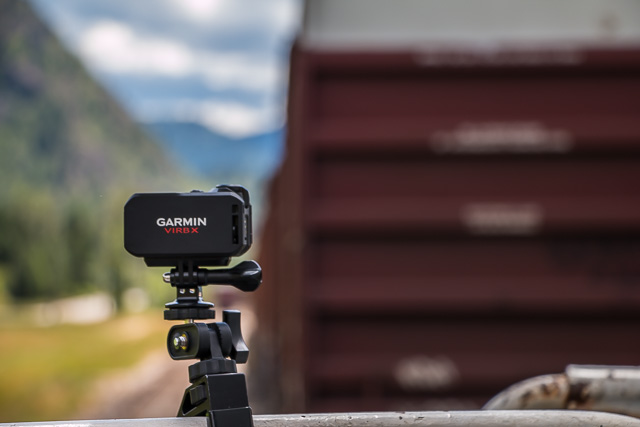
Recording a time lapse of the entire trip.
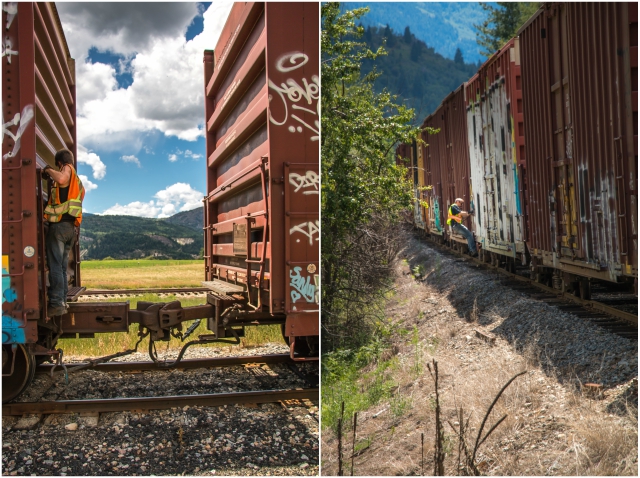
Moving cars about.
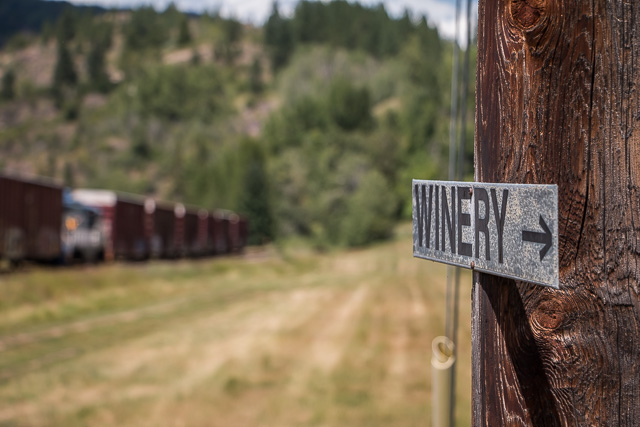
For next time…
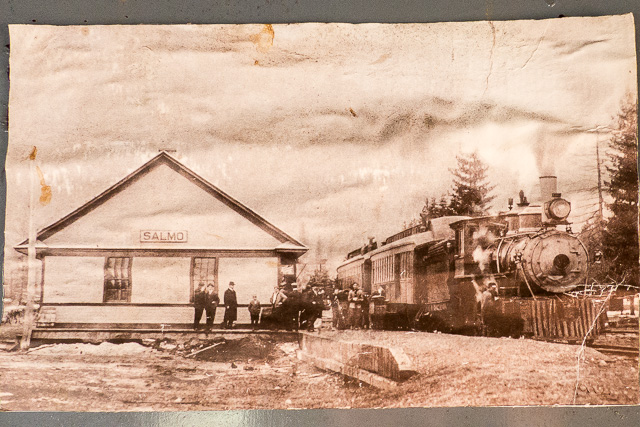
An old photo in the cab – Salmo BC long ago.
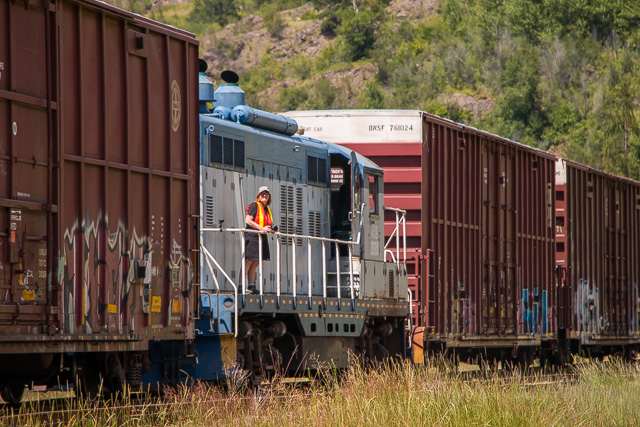
With more cars than space, it’s a juggle to get them in order.
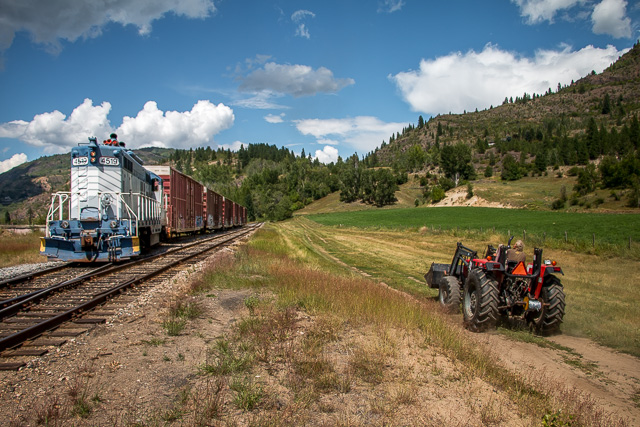
A farmer passes by.
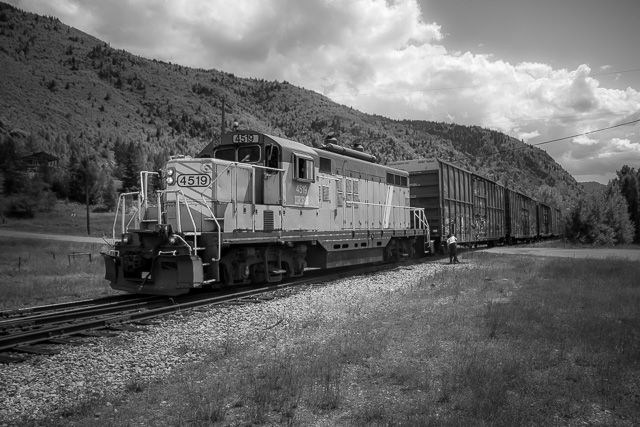
The switching continues.
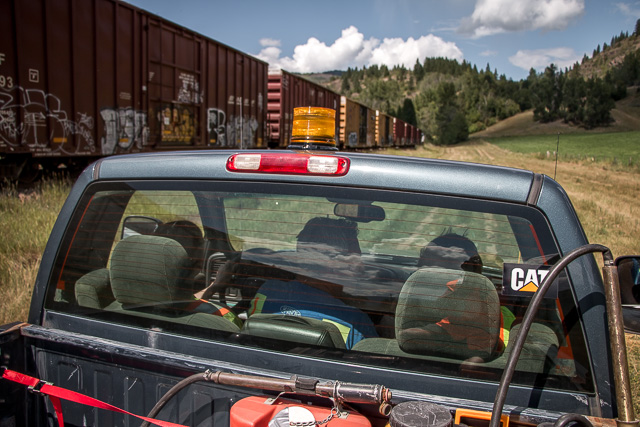
A lift back to the locomotive from the hi-rail crew.
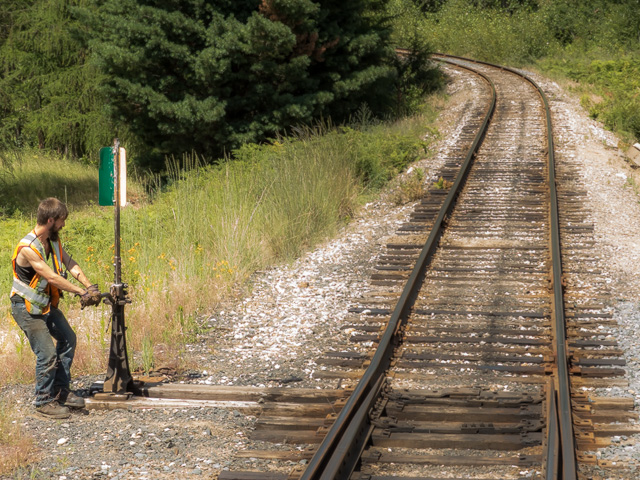
Aligning the switch and we’ll be on our way back to the mill.
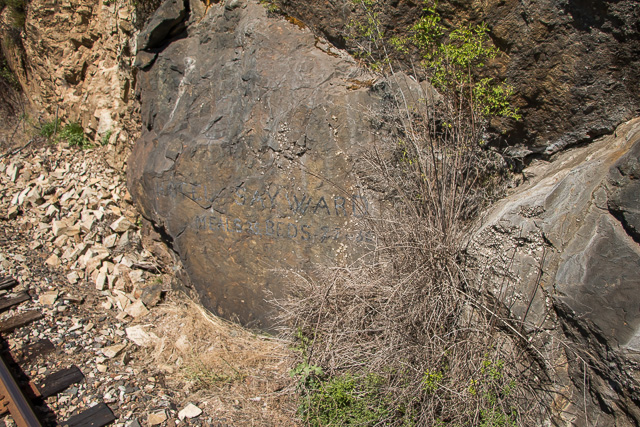
A ghost sign – Hotel Sayward, meals 35c, beds 25c(?)or 50c(?).
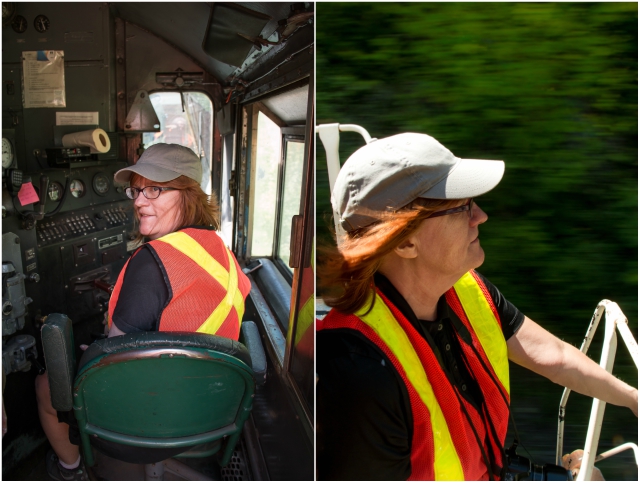
Connie takes her turn at the controls – and later just enjoys the ride.
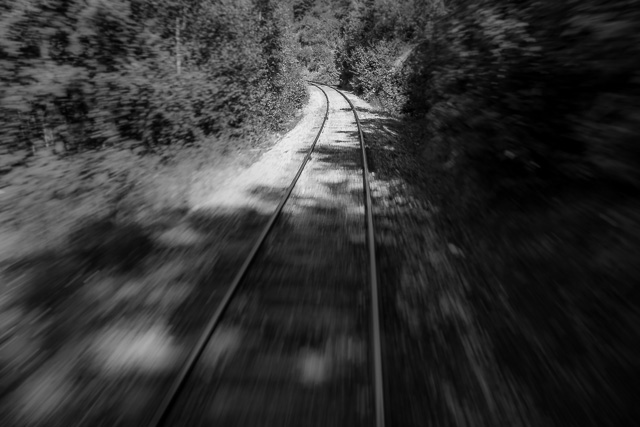
High speed rail!
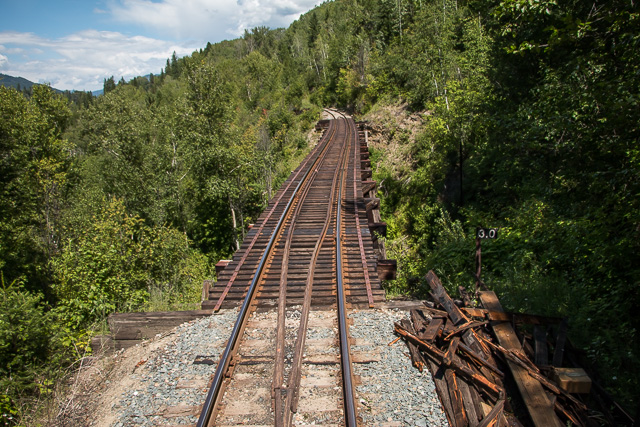
One of a good number of trestles along the most scenic section of line.
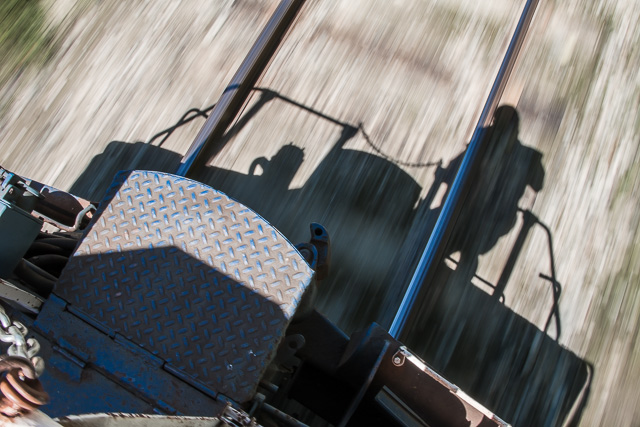
A slow shutter exaggerates the speed.
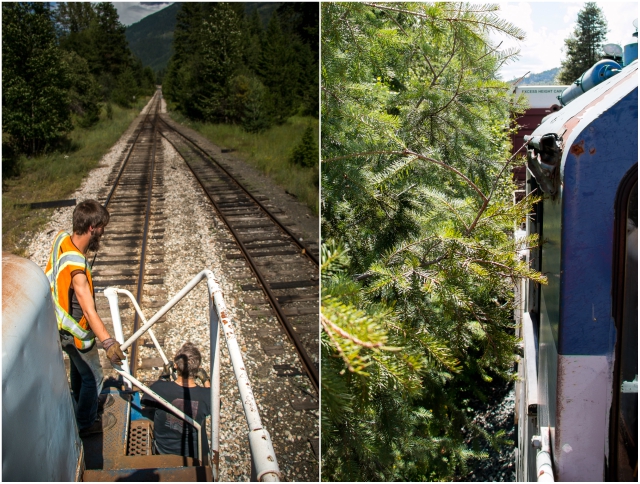
Dropping a few cars at the siding in Fruitvale – close clearances!
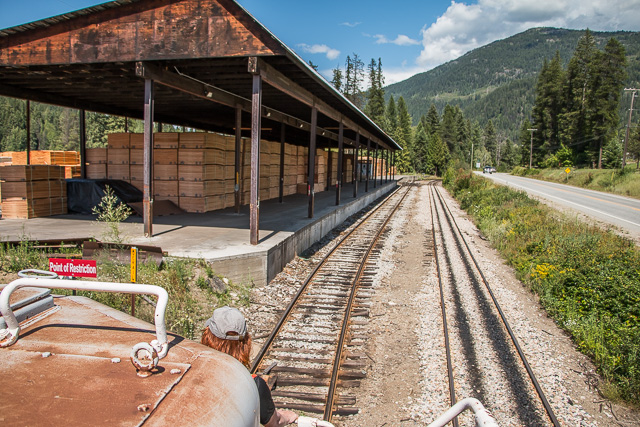
Loads of Veneer are ready at the loading dock.
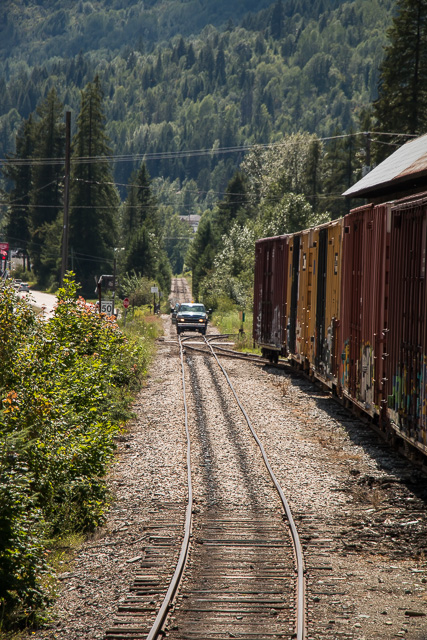
The hi-rail truck brings up the rear.
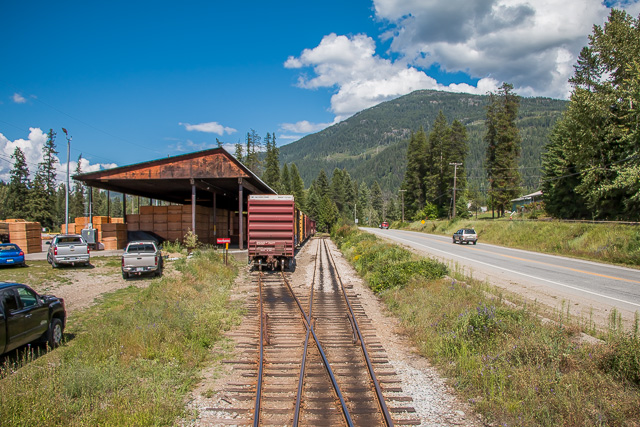
In a couple days, these boxcars will be filled and on their way.
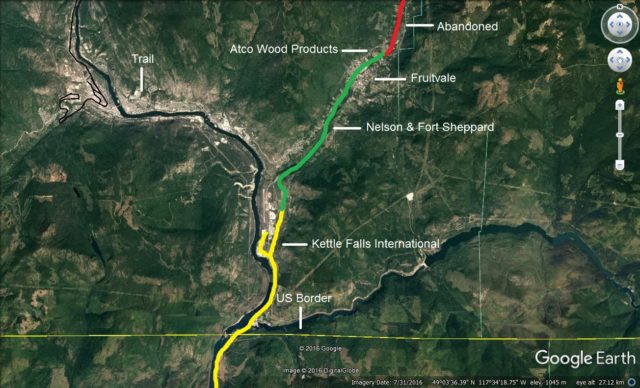
It’s a short line, but very important.

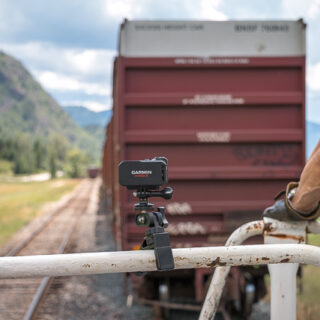
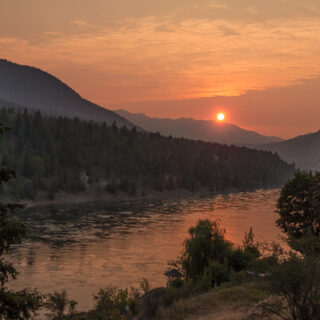
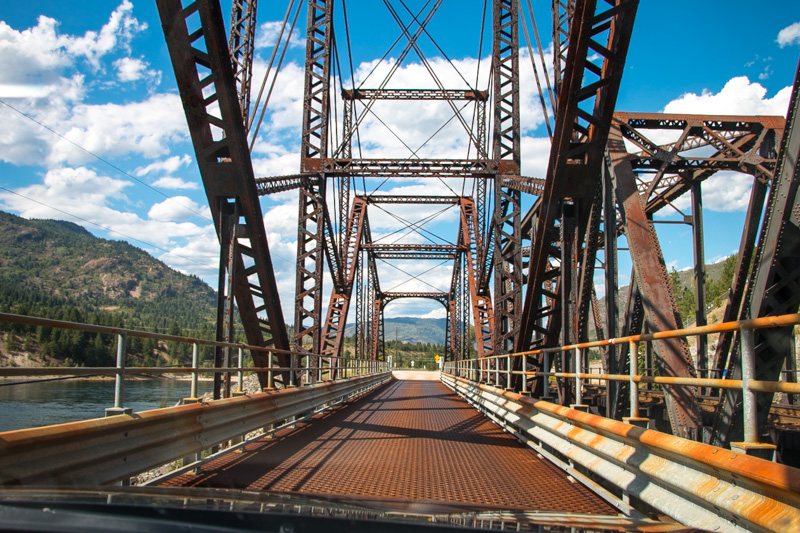
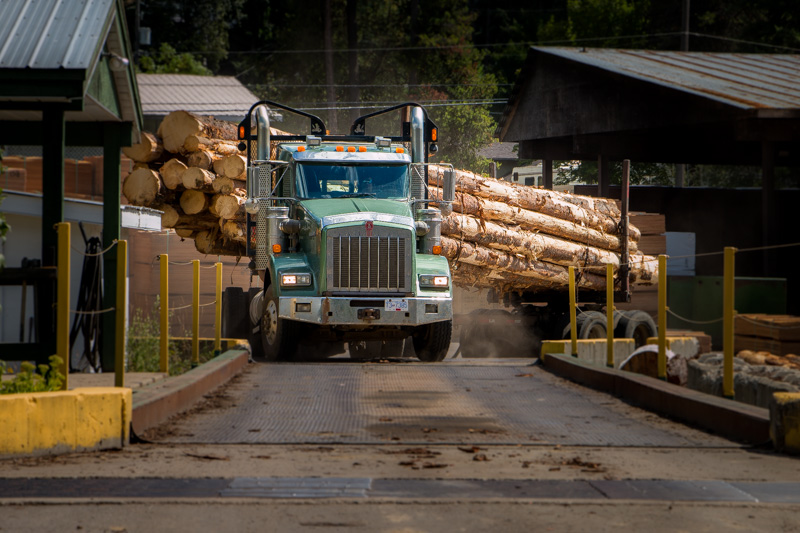
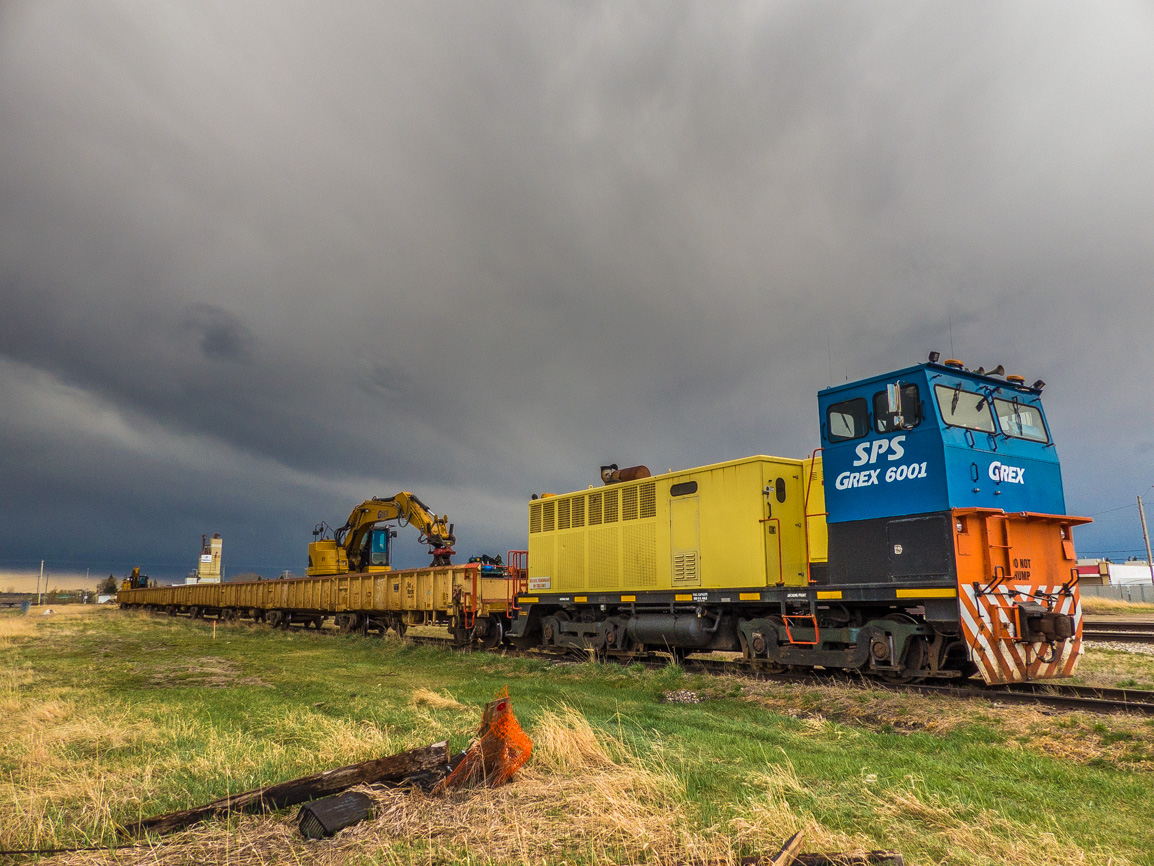
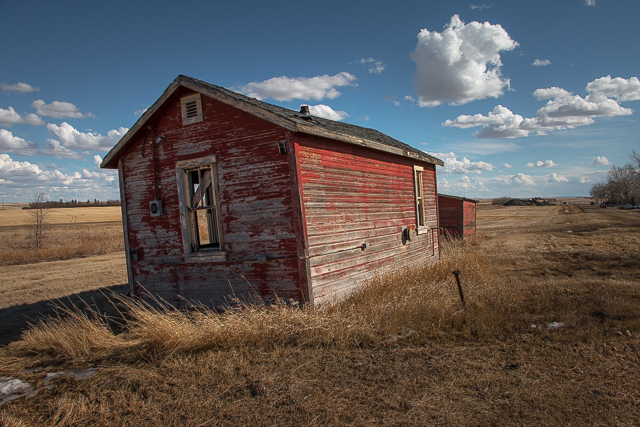
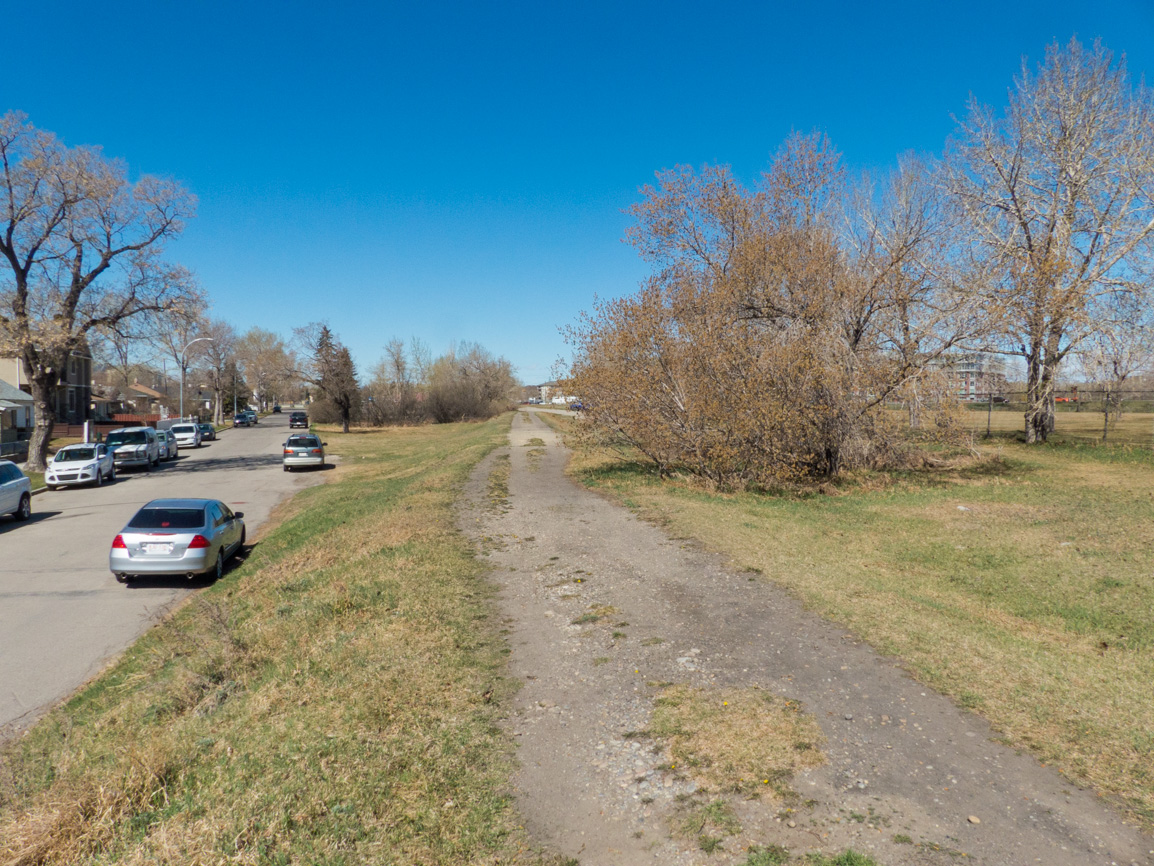
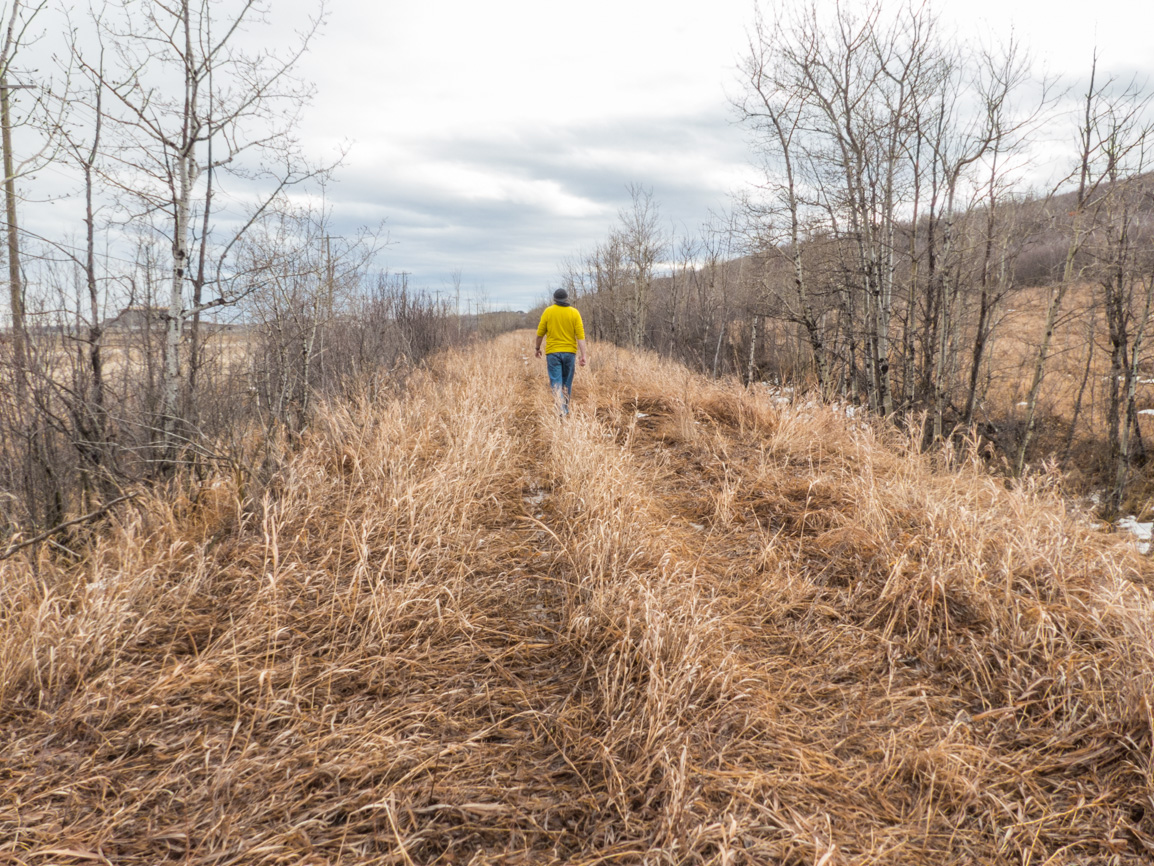
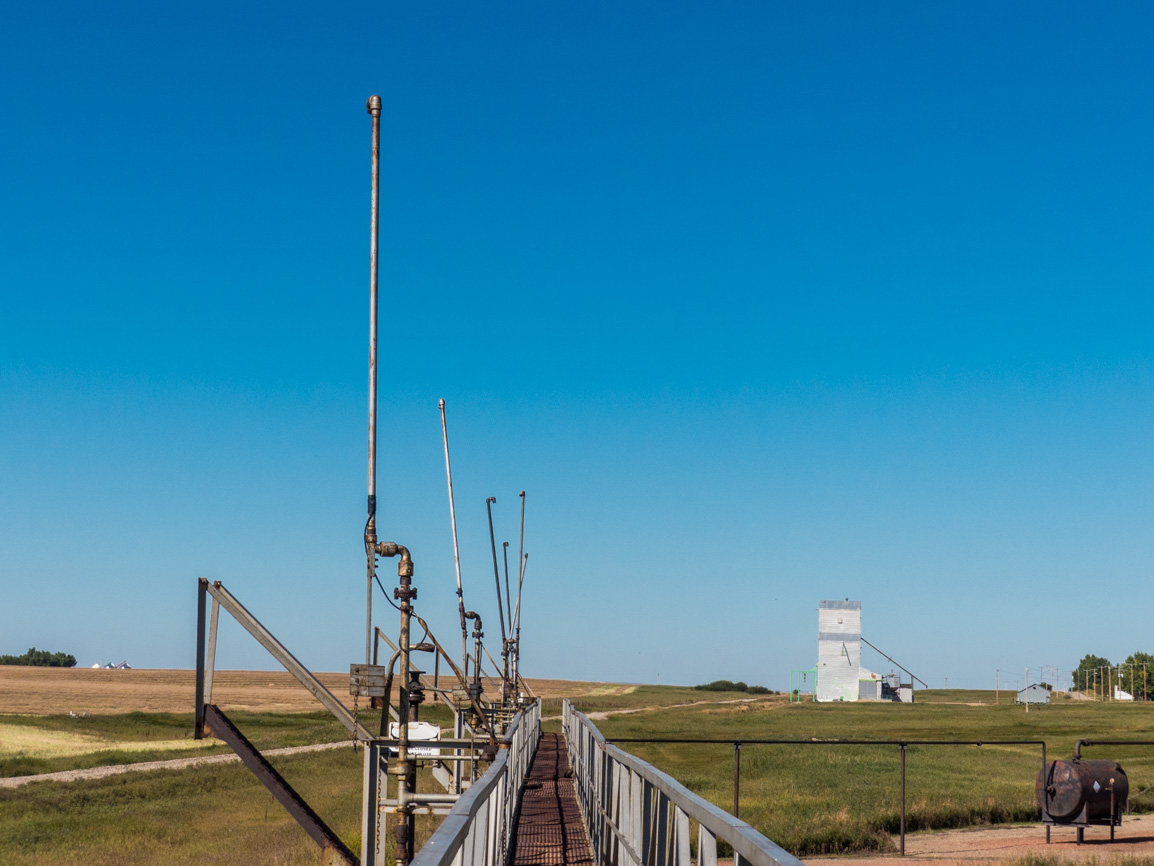
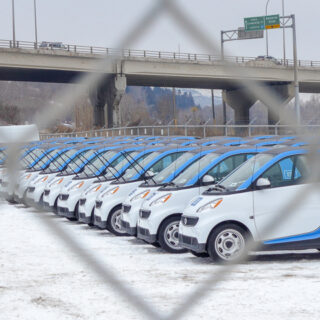
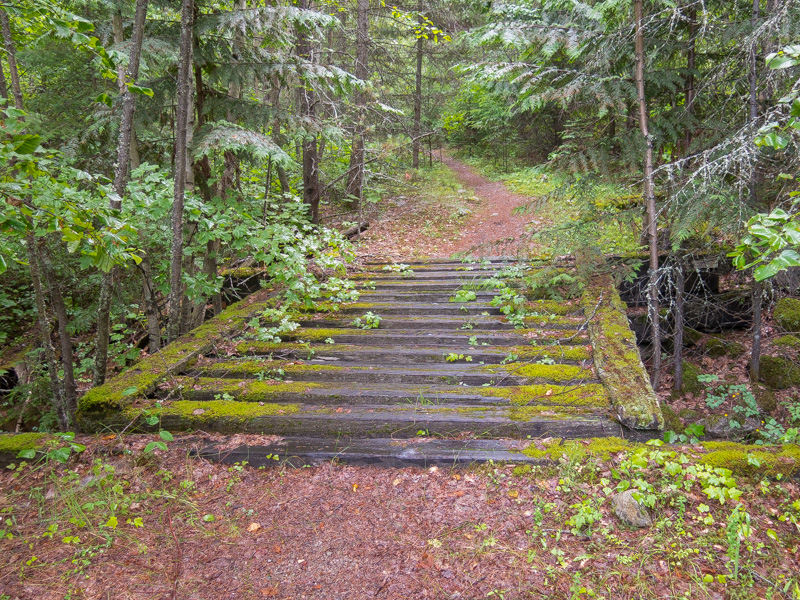
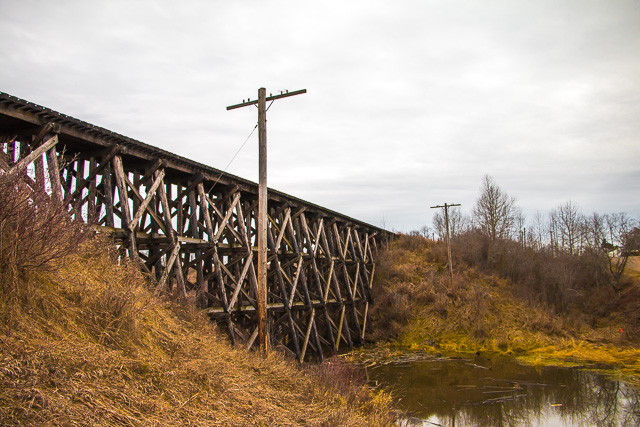
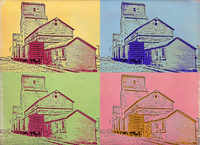






“…eight point one on a hot day.” Brilliant line.
Another great article that almost makes me feel like I was there and definitely makes me wish I was.
Thanks! Not many people seem to get our subtle sense of humour. That you’re there with us is the vibe we like to convey. Be part of the team and have a blast enjoying the experience!
This was a great story and pics to run into. I wonder.. since I live on Vancouver Island, where rail traffic has also all but disappeared, what has prevented some trucking operation from taking over those loads?
Would love to see a commuter line open up around Victoria, not to mention a seasonal tourist run and commercial/industrial short run elsewhere here! That sub from Parksville to Port Alberni is crying out for tourists… Thanks for your hard work.
Thanks, it was one of the most fun outings ever! Not sure the dynamics of it all, but if not on trains the loads must be going by truck on the Island. There is some definite cost advantages of going by rail, even with that boat ride. As long as you’re not in a hurry that is. I wonder if the current rail operator is exploiting business to its fullest potential? Commuter rail is one idea. And tourist trains – yes that Port Alberni section is begging for it. Some amazing scenery there. I suspect however, it’d be costly to run.
My wife and I drove this route in September when we came across this engine and of course the passenger car sitting on the trestle. We were more than a little intrigued as to what this was all about considering there seemed to be no other live rail system on either side of this area. Now we know the answer, your blog fills in those little mysteries when one drives by something like this and you spend the next few miles chatting back and forth in the car trying to figure it all out. Thank you
It’s a small line for sure, one of the shortest short lines in the country, but is still plays a huge part in the success of the mill that owns it and the many people who work there. Glad we could help explain it all!
…the Passenger Car is used for May Days and Christmas Train Rides to the Falls, and supports Food Bank initiatives… Locals rush to capture limited Ride Tickets for each event, and my Father-in-law rode with me on a couple of years ago…. My Grandkids love to ride, too, and it’s often a fun Family event.. Local Girl Guides and Scouts (from the owner’s Patrols) serve goodies, entertain, and make the trip even more fun…
Old Jack! Sounds like a great trip. It’s a scenic little railway with a heart. Love these guys.
Is 40 Mile Rail on your radar? I bet you could do a good story on them.
Working on it!
GP9s were very smooth runners. We got lots of first generation power on the BN branch lines I used to run, but the Geeps were tops. All the best, Tony, Spokane Washington.
We never hear bad words about a GP9. Those who worked with them or on them, all speak highly of the model. I guess that explains why so many are still hard at work six or so decades after being built.
What is the best place to see the train if I visited the area? Thanks, great website!
The best spot is Columbia Gardens where the exchange of cars takes place. There’s a road right beside the tracks affording one a safe vantage point which to view the action.
What’s the purpose of those tanks on the roof? I’ve not seen them on a GP9 before. Thanks.
These are air tanks for the braking system. On most locomotives they’re below the frame.
I believe some GP9’s had the air tanks roof mounted to accommodate a water tank below the frame for passenger heating boilers in the original high short hood. The boilers were removed when the “nose” was “chopped”.
Yes, that is correct and thank you for adding to to the story!
Nice! Are the rails still intact or pulled up beyond the mill?
There’s a short stretch just past the mill, but beyond the rails have been pulled up.
(via Facebook)
We were delighted to host Chris & Connie for a visit this summer, and appreciate them sharing our story.
You bet, it was a great time. Appreciate the opportunity to document your little railway.
Great story! A positive can do attitude, And this is why they’ll be successful!
Amen. They’ve go the right attitude, and with that you can move mountains.
Very nice story! Take the time to read every last word of it. Fantastic write up.
Ahh shucks, thanks so much!
I saw this locomotive in action nearly every day when I worked for the Grant Trunk and rode it many times. It was one of many engines of this type in service in the Toledo area. It was a busy time in the 70s. Would love to see up close again in person. Terry.
Oh Terry, that’s so cool! If you can make the trip, I’m sure the railway would love to show you it.
(via Facebook)
Faded paint but still a gorgeous looking engine. So jealous of what you do.
It’s got so much character. We do get to experience our fair share of fun but don’t be jealous. Enjoy it! Imagine yourself with us.
(via Facebook)
Any hope parts of the old line will come back again soon?
I doubt that. There’s no other businesses in the area that could benefit from rail service. Still, one can dream.
1st time I ever saw inside loco and all the controls.
It’s interesting, all those switches and levers and stuff. Glad you got to see it!
(via Facebook)
Got a slide of sister engine 4138 in my collection. Detroit, 1967.
Oooooooooow, would LOVE to see it. Please!
(via Facebook)
Ty for always including the history.
Of course. Photos without the history is like a steak dinner without the beer! Must have both!
Terrific, a great ride along! More! More! More!
Of course! Of course! We’re working on more stories like this.
(via Facebook)
Just look at that beauty, lets take a ride!
Of course, hop on the train, there’s room for all of you!
Very well done sir. Keep up the great photos!!!!!!!
Of course, it is after all what we do. Thanks for commenting!
(via Facebook)
I felt like I was there riding with you. I was a giddy child. Your writing and photography is superb!
Thank you muchly. That’s what we were after – we wanted you to be with there with us.
Loved the history in your article. I have visited that area several years ago but wasn’t train-watching on that trip. Here is a cool video of the 2 short-lines exchanging cars.
Cheers
https://www.youtube.com/watch?v=sMh5j4jvenc
It’s a great area even if trains are not on the agenda. Love it! Great video thanks for sharing.
Awesome guys! Great scenery and a great locomotive to catch a ride on!
An old locomotive still hard at work and showing no signs of stopping. Does it get any better? It was a blast!
I want to get down that way and photograph the train in action, hopefully, next year!
It’s an interesting area and we’re itching to go back next year. We were there in the summer of 2021, but with the stifling heat we couldn’t get out and explore much. And we had so many epic places lined up to visit.